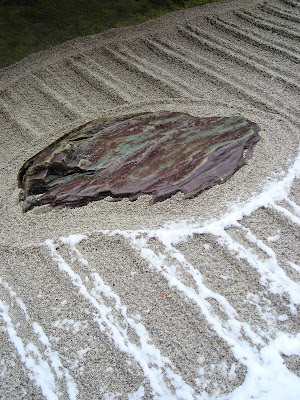Season passes to the show
14th December 2008
More cuts, more iodine. But also more photos.
...
It’s one of the greatest shows on earth. Once a year, for a limited season and only in selected venues, trees set themselves on fire.
Tourists flood into Kyoto every autumn to catch the city-wide performances. It’s hardly a complicated plot – leaves light up in all shades of burn from yellow to red, then fall – but the more popular spots pack the crowds in until it’s standing room only.

The preparation begins weeks, no, months in advance. Tickets have to be printed and programmes designed, of course, but the real work begins in summer, when scripts are handed out and moves blocked.
But it’s not humans who direct the show. We just set the scene, do the ushering and sell tickets and refreshments (red bean soup is particularly good in the cold).
No, there’s a larger force directing – larger even than Steven Spielberg. This director cues the cast through sunlight, temperature and typhoons. If it sends, for instance, a cool and rainy summer, the trees respond with a muted, low-key performance.
On the other hand, a big difference between night and day temperatures, and lots of strong sunlight will produce a hot number. And if no typhoons come to rip off branches and spoil leaves with seawater, expect a show that will bring the house down.
Just a note about casting: not all trees can play a part in the autumn extravaganza; they have to be deciduous, which is a fancy way of saying bits – leaves, horns or teeth – fall off regularly. (Incidentally, the number of tree species which shed teeth is somewhere between 50 and -1.)
So coniferous trees – phlegmatic types like pines that stay evergreen and do nothing more dramatic than produce cones – never feature in the fall line-up. The limelight is hogged by their deciduous cousins: drama queens who spend a good part of the year on costume changes.
Chief among this lot is the maple. If you run into a bunch of maple trees, listen carefully – you may hear them calling each other darling in syrupy tones.
Trees talk all the time, whether you hear them or not, and autumn is probably the easiest time of the year to catch the conversation. Dry leaves whisper louder than green ones and when the wind whips them away, the whisper becomes a roar.
They quiet down when they fall, covering the ground in gold leaf, but when the wind whirls round again, they crackle up about you, rustling and hustling you to go see the show.
Most venues offer only matinees but some also light the trees up for evening shows. One of these takes place in Kibune, a mountain village north of the city. Once the sun goes down, visitors stream in by train and bus, the floors of both spotted with maple leaves like so many dropped flyers.

When you spill out of the bus, wood and paper lamps are waiting, lined by the road to take you to the glowing trees. It is a long, winding stage, with the river rippling through the orchestra pit that runs beside it. Even in the dark, the water never stops playing, flowing under and around the susurrus of the leaves.
They draw you on to Kibune shrine, which sits at the top of a flight of uneven stone steps. Red lanterns line both sides and they are lit, as are the amber trees arching over them.
At the shrine, a cluster of small buildings open to the mountain cold, log fires flicker but the trees burn with an unwavering light.
It is a show of strength, one last act of red defiance before grey winter upstages them.
And if you leave Kibune on rail, you’ll see the show one more time as the train goes through a maple leaf tunnel. The conductor will switch off the carriage lights and emboldened by the darkness, the trees will press forward on both sides, their arms weighed down by little seven-pointed lanterns.
It is as if the leaves know that they will fall in a matter of days but before they do, want to return all the light the year has given them.
But the passengers can only spend so much time with them before the train pulls away, speeds up, the lights come back on – and the entire carriage groans.
Behind them, the trees continue speaking their lines even though the dialogue doesn’t change much. Autumn is a simple story, after all, and everyone knows how it ends. Which may be why most of those who come to Kyoto for the show leave before the final act.
Even as they file away into buses, trains and tour coaches, winter is waiting in the wings and as the last curtain falls, it springs forward to strike the sets, the wind close on its heels. A stagehand with more enthusiasm than finesse, the wind bustles around, stripping off leaves without caring where they land.
The red, gold, orange and yellow flame through the air, smouldering out on the ground – the house lights, the house leaves come down and the theatre goes dark.
But perhaps only until the next season. If the sky feels dramatic, it will scatter white with both hands to smooth everything into an ice crystal stage. And when that happens, snowmen will stumble up to take their places.
I’m hoping it’ll be a good run.

The view from the top of the stairs leading to the main hall of Kibune shrine.





